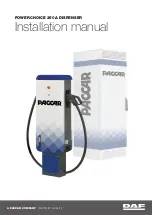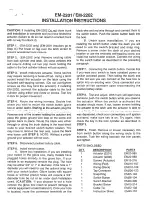
WHAT IS BLIND SPOT
INFORMATION SYSTEM
Blind spot information system is designed
to detect vehicles that may have entered
the blind spot zone.
HOW DOES BLIND SPOT
INFORMATION SYSTEM WORK
The system is designed to detect vehicles
that may have entered the blind spot zone.
The detection area is on both sides of your
vehicle, extending rearward from the
exterior mirrors to approximately 13 ft
(4 m) beyond the rear bumper. The
detection area extends to approximately
59 ft (18 m) beyond the rear bumper when
the vehicle speed is greater than 30 mph
(48 km/h) to alert you of faster
approaching vehicles.
E255695
BLIND SPOT INFORMATION
SYSTEM PRECAUTIONS
WARNING:
Do not use the blind
spot information system as a
replacement for using the interior and
exterior mirrors or looking over your
shoulder before changing lanes. The
blind spot information system is not a
replacement for careful driving.
WARNING:
The system may not
operate properly during severe weather
conditions, for example snow, ice, heavy
rain and spray. Always drive with due
care and attention. Failure to take care
may result in a crash.
BLIND SPOT INFORMATION
SYSTEM LIMITATIONS
The system does not operate in park (P)
or reverse (R).
Note:
The system does not prevent contact
with other vehicles. It is not designed to
detect parked vehicles, pedestrians, animals
or other infrastructures.
Note:
The system could not alert you if a
vehicle quickly passes through the detection
zone.
Note:
Blocked sensors could affect system
performance.
Note:
The system may not correctly operate
when towing a trailer. For vehicles with a
trailer tow module and tow bar approved
by us, the system turns off when you attach
a trailer. For vehicles with an aftermarket
trailer tow module or tow bar, we
recommend that you switch the system off
when you attach a trailer.
304
2022 Transit (TTH) Canada/United States of America, NK3J 19A321 AA enUSA, Edition date: 202107, First-Printing
Blind Spot Information System
















































